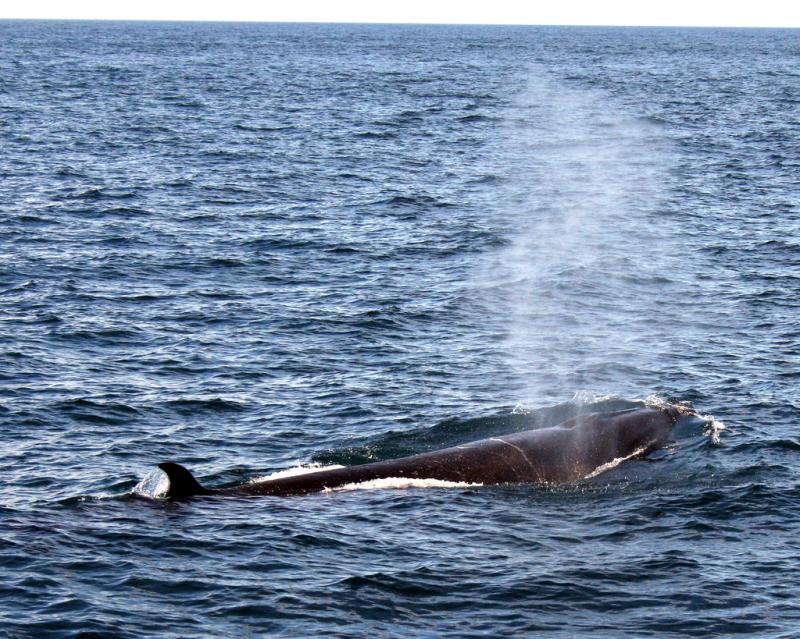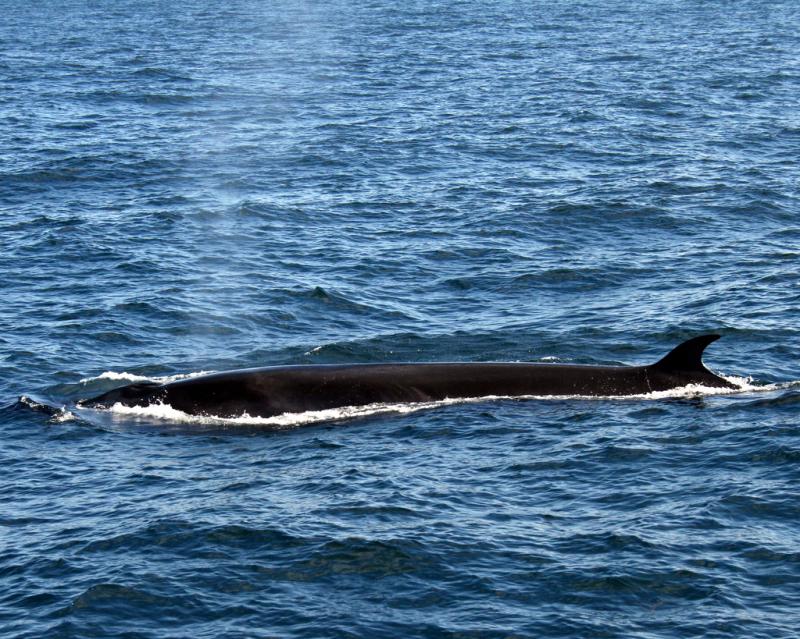Wildlife North America . com North American Animals - mamals, birds, reptiles, insects |
Sei Whale (Balaenoptera borealis)
Sei Whale off Gloucester, Massachusetts Photograph by Seth Lieberman. Some rights reserved. (view image details) 
Sei Whale off Gloucester, Massachusetts Photograph by Seth Lieberman. Some rights reserved. (view image details)
SEI WHALE FACTS
DescriptionSei whales are dark gray with irregular white markings across the back. The body is relatively slender with short pectoral fins and sickle shaped dorsal fin. The snout is pointed. On the underside of throat and chest is 38-56 grooves. The upper part of the mouth contains 300 - 380 grey-black baleen plates on each side. The plates have whitish bristles for trapping food. Size Length 12m - 15m. The largest known Sei whale was 20m. Environment open ocean Food Feeds on krill and other small crustaceans, and also small fish. They swim on their side near the surface through swarms of prey. The food is trapped in its baleen plates. An average Sei whale eats about 900 kilograms every day. Breeding Breeding season is November and February in northern hemisphere and May and July in southern hemisphere. A single calf (rarely twins) is born after gestation of 10.5 months - 12 months. The calf is about 4.5m long at birth and is weaned after 6 - 7 months. They can live to 74 years old. Range all oceans except polar and tropical regions. Conservation Status The conservation status in the 2004 IUCN Red List of Threatened Animals is "endangered". Classification
Relatives in same Genus Northern Minke Whale (B. acutorostrata) Bryde's Whale (B. edeni) Blue Whale (B. musculus) Fin Whale (B. physalus) Home | Mammals | Reptiles | Birds | Insects | Privacy Policy | Disclaimer | Contact Us |